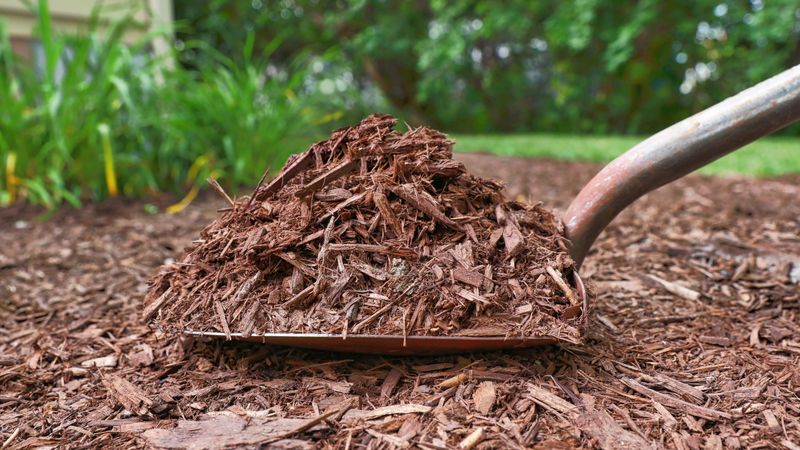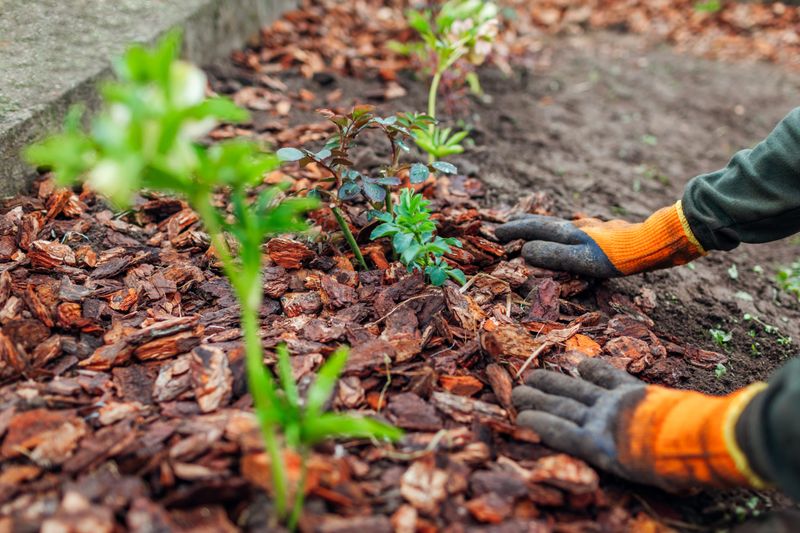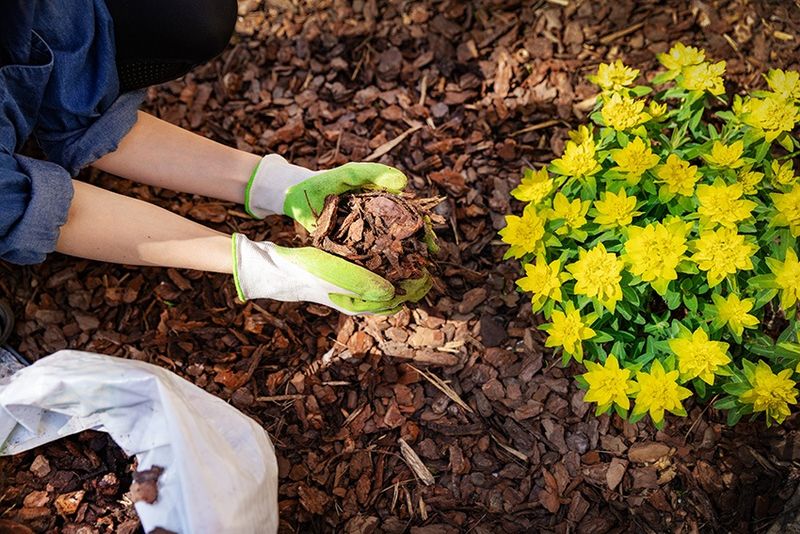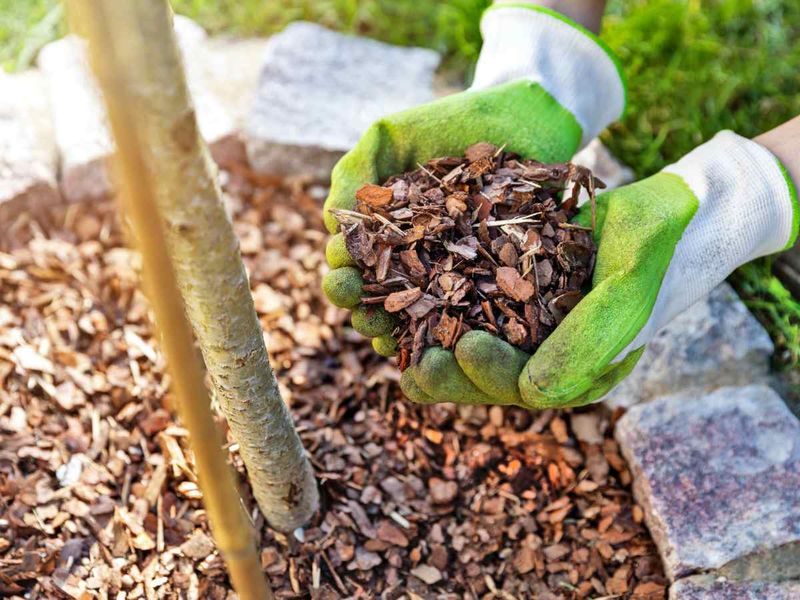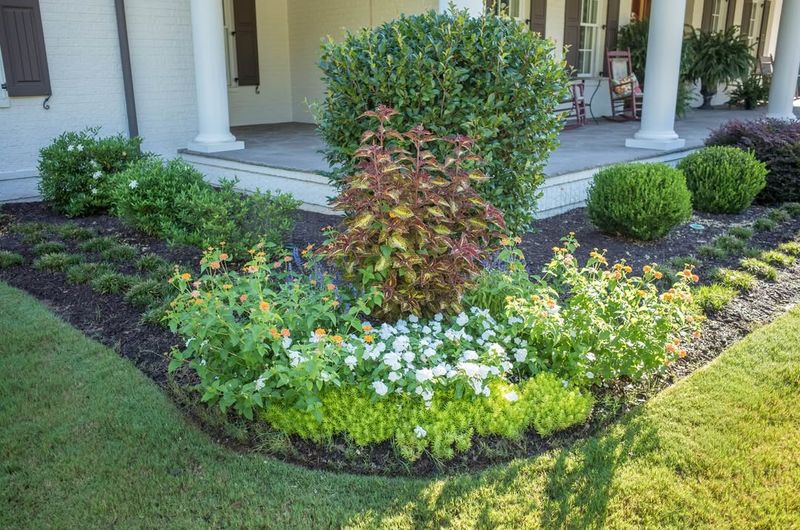In many Minnesota neighborhoods, the first hint of colder days sends gardeners out with wheelbarrows full of mulch long before winter takes hold. The move may seem early to anyone new to the rhythm of northern seasons, yet locals know the soil can turn hard in the blink of an eye.
A quick layer of mulch locks in warmth, shields tender roots, and keeps moisture from slipping away during dry spells. By stepping ahead of the freeze, gardeners give their beds a strong buffer against the long winter, setting the stage for healthier, faster growth when spring finally breaks.
1. Protecting Against Late Frost Surprises
Spring in Minnesota can trick even experienced gardeners. One week might feel like summer, then suddenly frost hits overnight and damages tender new growth.
Mulch acts like a cozy blanket for plant roots, keeping soil temperatures more stable. When cold snaps arrive unexpectedly, that protective layer prevents roots from freezing. Starting early during fall means your plants have defense ready before Mother Nature throws her curveballs at your garden beds.
2. Locking In Precious Soil Moisture
Ever notice how quickly soil dries out during Minnesota’s windy spring days? Without protection, moisture evaporates faster than you can water.
Fall mulching traps moisture in the ground where roots need it most. Wind and sun cannot steal that precious water as easily when mulch covers the surface. Your plants stay hydrated longer, and you spend less time dragging hoses around. Smart gardeners know this simple step saves both water and effort throughout the growing season.
3. Stopping Weeds Before They Start
Weeds are opportunists that sprout the moment temperatures rise. Getting mulch down early blocks sunlight from reaching weed seeds hiding in your soil.
Without light, most weeds cannot germinate and grow. This head start means fewer hours spent pulling unwanted plants later in summer. A thick layer applied in early spring creates a barrier that keeps flower beds looking neat and reduces competition for nutrients. Prevention beats endless weeding any day of the week.
4. Giving Soil Temperature A Boost
Minnesota soil stays cold well into spring, which delays plant growth and flowering. Dark mulch absorbs sunlight and warms the ground faster than bare soil can manage alone.
Warmer soil encourages root development and helps beneficial microbes become active sooner. Plants growing in warmer soil produce stronger stems and bloom earlier. Applying mulch when temperatures first climb gives your garden a jumpstart that lasts all season. Those extra warm degrees make a real difference for flower health.
5. Preventing Soil Erosion During Rains
Spring storms dump heavy rain that washes away topsoil if nothing holds it in place. Minnesota gardeners lose valuable nutrients and create muddy messes without proper protection.
Mulch cushions the impact of raindrops and keeps soil from running off into pathways or drains. Roots stay anchored, and your carefully prepared beds maintain their shape. Starting early means protection is ready before the first big rainstorm arrives. Keeping that rich topsoil where it belongs saves money and effort.
6. Feeding The Soil As Mulch Breaks Down
Organic mulch does not just sit there looking pretty. Over time, it decomposes and adds valuable nutrients back into your garden soil.
Starting the mulching process early gives materials more time to break down during the growing season. Earthworms and beneficial organisms work beneath the surface, creating richer soil for plant roots. By fall, your flower beds have better structure and fertility than they did in spring. Natural fertilization happens automatically when you plan ahead with early mulching.
7. Keeping Roots Safe From Temperature Swings
Minnesota weather changes faster than you can check the forecast. Temperatures might soar to 70 degrees one afternoon, then plunge to freezing that same night.
Plant roots suffer stress from these wild temperature changes, which weakens overall health. Mulch insulates soil and moderates these extreme shifts, keeping conditions more consistent. Roots grow steadily instead of struggling to adapt constantly. Getting mulch down before these swings begin protects plants from unnecessary shock and promotes stronger, healthier growth all season long.
8. Creating A Professional, Polished Garden Look
First impressions matter, especially when neighbors start spending time outdoors again. Freshly mulched beds look intentional and well-maintained from day one of spring.
That uniform color and texture makes flowers pop visually and shows you take pride in your landscape. Early mulching means your garden looks its best right when everyone notices yards again after winter. Clean edges and consistent coverage create curb appeal that lasts months. Beauty and function combine perfectly when you start the season with proper mulching.


